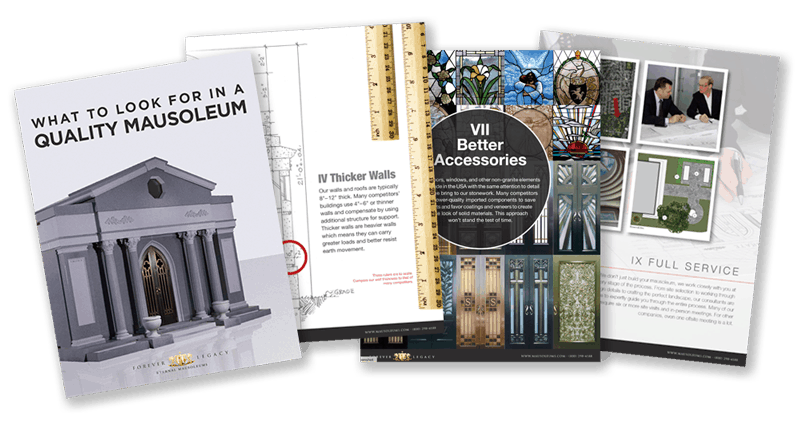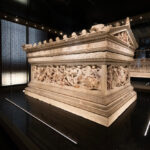Winter Mausoleum
Egyptian
The Winter mausoleum, built in 1930, appears to be an exact duplicate of the Woolworth mausoleum at Woodlawn Cemetery in The Bronx, that was built in 1920. Architect John Russell Pope designed the Woolworth mausoleum. Judging from the similarity between the two mausolea, Pope appears to have been involved with or at least consulted on the Winter mausoleum. With their clean lines and more stylized ornaments, both mausolea are a departure from older forms of Egyptian Revival architecture. The quite buxom sphinxes are derived from Greek architecture, where sphinxes were always female, but other details, such as the vulture wings, cobras and sun are all taken from ancient Egyptian architecture.
The bronze door of the Winter mausoleum is a treasure trove of Egyptian symbols. The most widely known symbol is the “ankh” being held by both male figures. The ankh is a symbol of immortality, often depicted being carried by the Gods. The ankh combines two Egyptian symbols, the T cross, or tau, (the symbol of Osiris) and the oval, (the symbol of Isis). At the top of the door are twin vultures, symbols of maternal care.
Emil Winter (1857-1935), was president of the Workingmen’s Savings Bank and Trust Company in Pittsburgh and was head of a number of metal production companies. He had a large overseas plant in Austria, for processing manganese ore. He was one the founders of the Pittsburgh Steel Company.
As grand as his mausoleum is, it is overshadowed by “Lyndhurst” his opulent home in the Squirrel Hill area of Pittsburgh.
Text and photos © Douglas Keister Visit Doug’s Author Page
[address cemetery=”Allegheny Cemetery” street=”4715 Penn Avenue” city=”Pittsburgh” state=”Pennsylvania” zip=”15224″]

